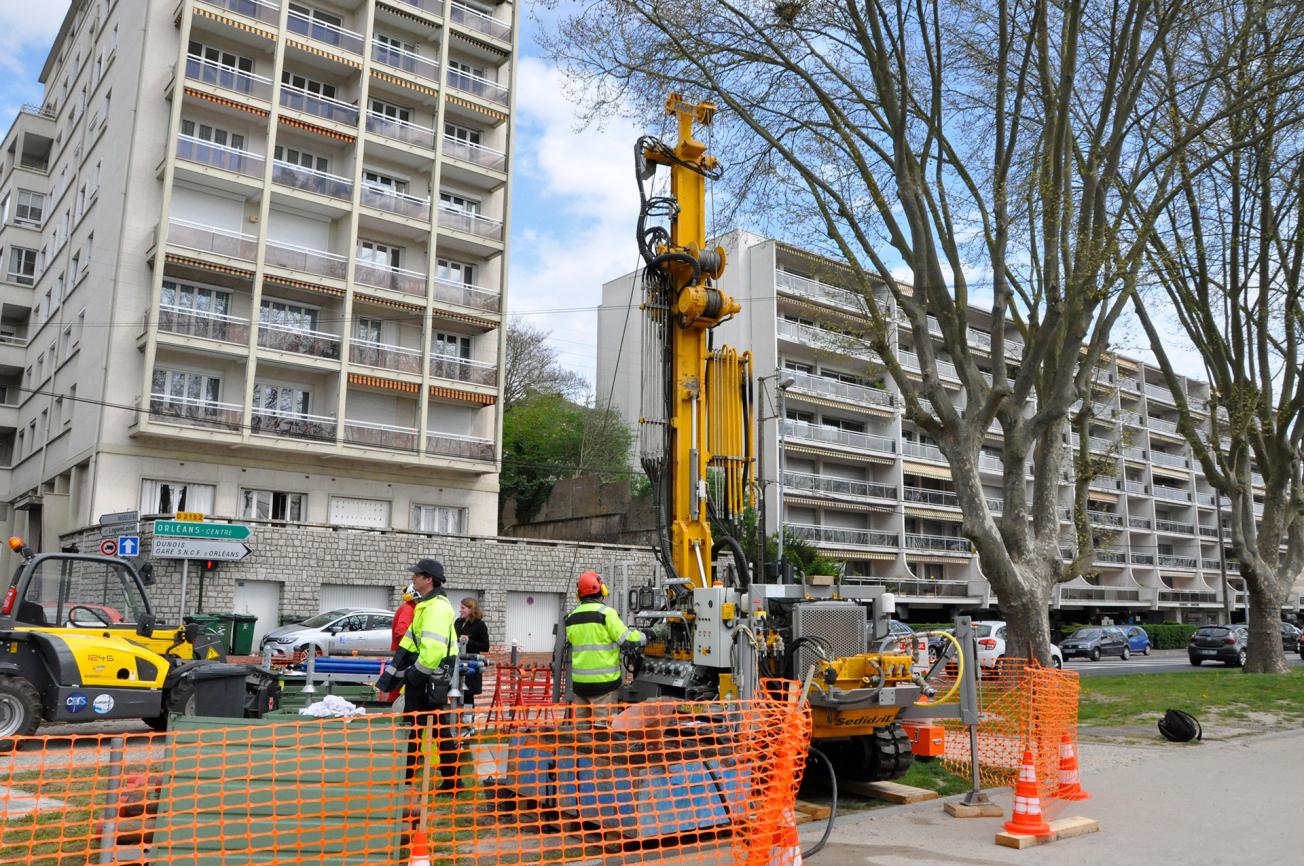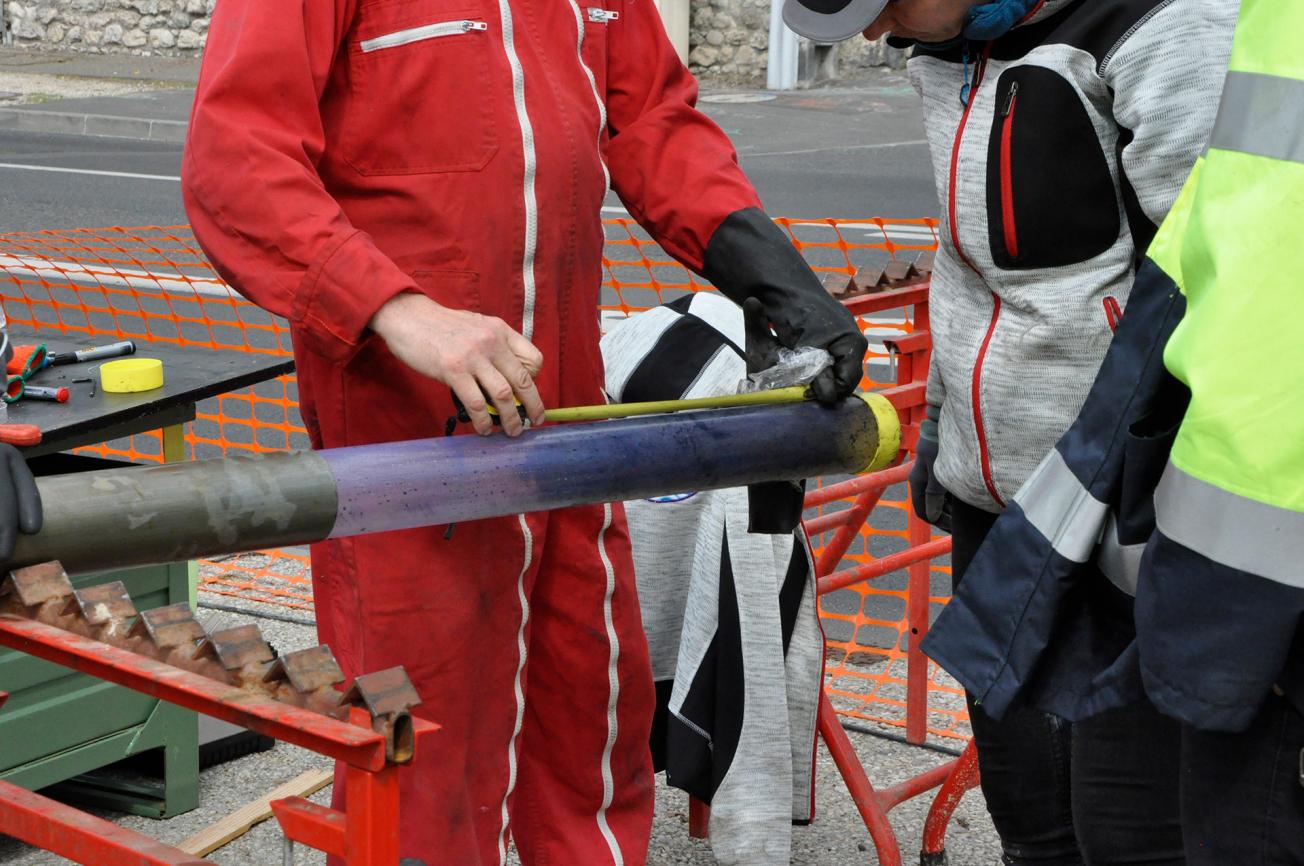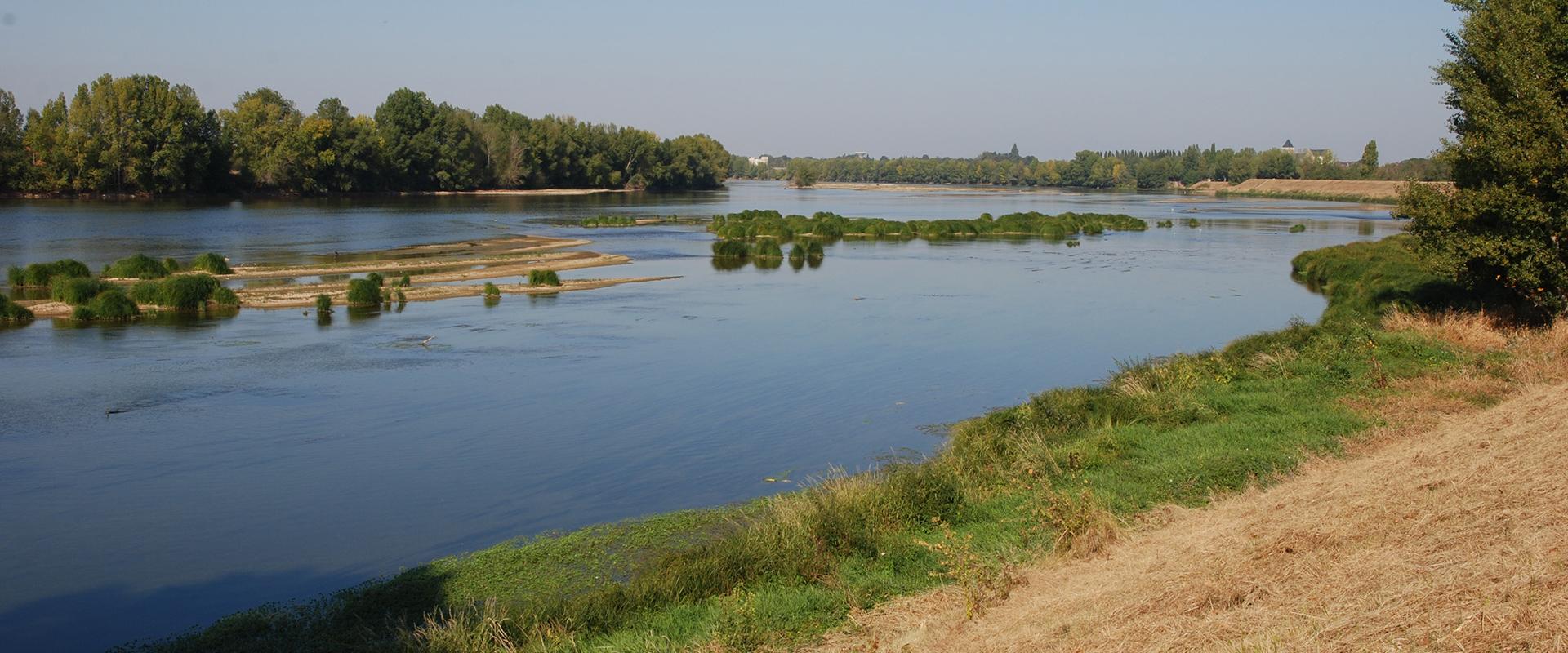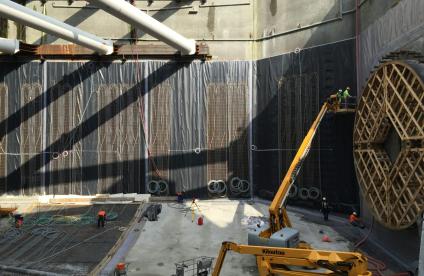
The core sampling operation on the Quais Madeleine in the city centre of Orléans, conducted with support from the BRGM drilling workshop.
© BRGM - Astuti Briard
From 3 to 7 April 2017, scientists from the Orléans Institute of Earth Sciences (ISTO), a combined research unit involving the CNRS, the BRGM and the University of Orléans, took core samples from waste and stormwater residues in the northern part of Orléans. The samples will be analysed to trace the area’s changing human activities.
Tracing the history of human activities in the Orléans urban area from urban sediment analyses
From waste and stormwater residues collected from the Orléans sand chamber (see box), the team identified different traces of natural events and human activities, which can be dated: these traces include medicines, pollutants, leaded petrol, caffeine, nicotine, etc.
These analyses will be used, firstly, to produce a uniquely detailed history of activities in Orléans since 1942, spanning areas as varied as transport, food and diet, health, energy, construction, biodiversity, industry and leisure.
Secondly, the study will contribute to the worldwide "Golden Spike" project, which is seeking to date the start of the Anthropocene as accurately as possible by identifying a possible new stratigraphic interval characterised by signs of the predominant impact of human activities on environmental change that distinguishes it from earlier layers.

The sediment analysis is expected to produce a uniquely detailed history of the local area.
© BRGM - Astuti Briard
Long-standing cooperation between the BRGM and the CNRS
To conduct this core sampling operation, the expertise of the BRGM's drilling workshop was called on under the BRGM-CNRS framework agreement, which strengthens collaboration between the two organisations in the geosciences and the engineering, environmental and human and social sciences.
This agreement provides in particular for pooling facilities. The BRGM is contributing to the project with drilling equipment for the site and the expertise of a specialised core sampling technician.
The sand chamber: part of the Orleans wastewater treatment system
The Orléans Métropole sand chamber was built in 1942 as a decantation system to trap the larger particles contained in sewage and stormwater in the northern part of the Orléans urban area, before transfer to the wastewater treatment plant at Chapelle-St-Mesmin. Renovation of the sand chamber in 2015 provided easier access to the facility in order to remove the 5-metre layer of accumulated sediment and ensure the continued efficiency of de-sanding operations.
In 2015, an initial operation (19 cores) down to 2.5 metres provided samples of material dating back to 1980.







